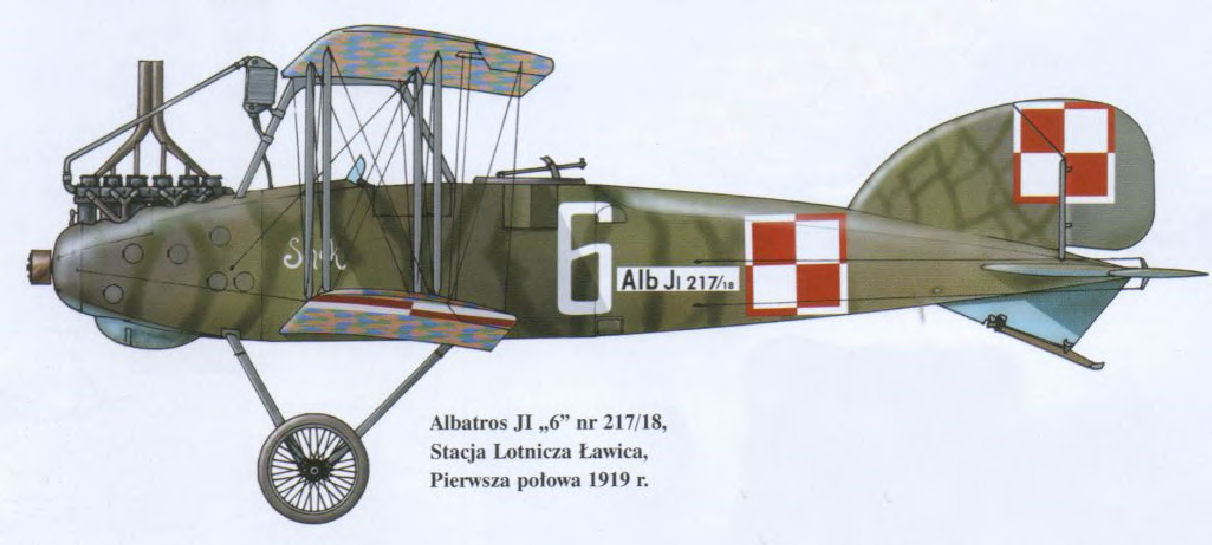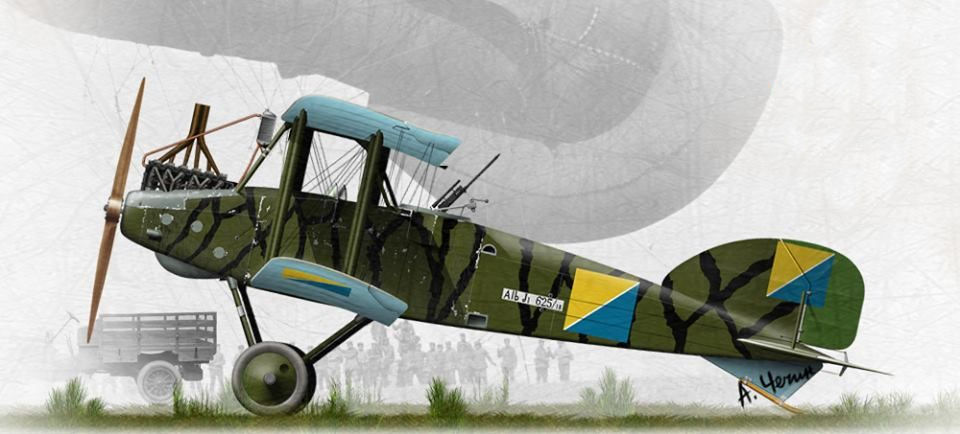The source of the "Tiger camo" profile is interesting. Shortly after WW1m a Japanese artist/author published in Japan a book including three plates he drew of German aircraft he had studied. one of these was an Alb.J.II with this "tiger " camouflage.
Generally, the Alb.J.II were covered with the 5 color printed fabric, dark pattern on the top and the light pattern on the bottom surfaces. the fabric was applied chordwise parallel to the ribs The rudder was painted white. The plywood covering the aft part on the J.II was varnished resulting in a warm straw yellow color.
Lithuanian Albatros J
On 23rd November 1919, Lithuanian troops disarmed the (German equipped anti-Bolshevik) Western Volunteer Russian Army of Gen. P. Bermondt-Avalov in a city Radviliškis. Among the equipment captured were captured three Albatros J.IIs serials: 705, 710, 714. Two of them 705 and 710 had been brought into service and saw combat service (at least aircraft 710 was in combat for sure). The third one – 714 - served as a source of spare parts. Later on an aircraft 714 had been repaired and assigned to 1st Air Squadron in September 1921 along with the second aircraft of this type (probably 710). In turn Aircraft 714 was sent to warehouse.
They sawaction during the Polish Lithuanian war of 1920-21. On November 7 Sabanavicius flew albatros J II nr 710 through Vievis-Lentvaris (5 bombs dropped) Trakai-Rykantai (machinegunfire and riflefire, 2 grenades dropped on infantry) and Duksta (nearby Adamov village 3 grenades dropped on 2 gun positions.
Again November 19 the Albatros dropped some bombs on differnt positions near Lyduokiai.
In 1940 the J.II 710 was with the 6th Eskadrile, while 714 was with the 8th Eskadrile (both based at Panevezys). By this time they would seem to have been doped silver overall.

Polish and Ukrainian Albatros J
Poland and Ukraine operated Albatros JI (not JII) in 1917-21.
There were 10 Albatros JI aircraft in Poland, war spoils from teh fighting in Greater Poland. Albatros JI planes equipped the 1 Esk. Wielkopolska (later 12 EW), 3 Esk. Greater Poland (later 14 EW), 8 EW and the allied 1 Zaporozhian Ukrainian Squadron. The 1 Esq. Albatros JI were used in Greater Poland in the spring and summer of 1919 and then on the Southern Front during the liberation of Eastern Lesser Poland, those in the 8th EW were active during the Battle of Warsaw in August 1920, and those in the 14th EW in Volhynia in the Lutsk region . The largest numberin the fall of 1920.
4 Albatros JI, were assigned to the 1st Zaporozhian Ukrainian Squadron, which was part of General Pavlenko's army. The squadron was formed in July and went to the front in September 1920, where it operated for some time after the armistice. At the end of November she returned from Wołoczyska to Lviv. The transfer of all equipment, including 4 Albatros JI, back to the Polish side took place in Bydgoszcz in February 1921.
The Polish Albatros JI wer disarmed in the spring of 1921, only one remaining active in the Pilot School in Ławica till summer of 1922.


 Author
Topic: Albatros J1 (Read 1774 times)
Author
Topic: Albatros J1 (Read 1774 times)


